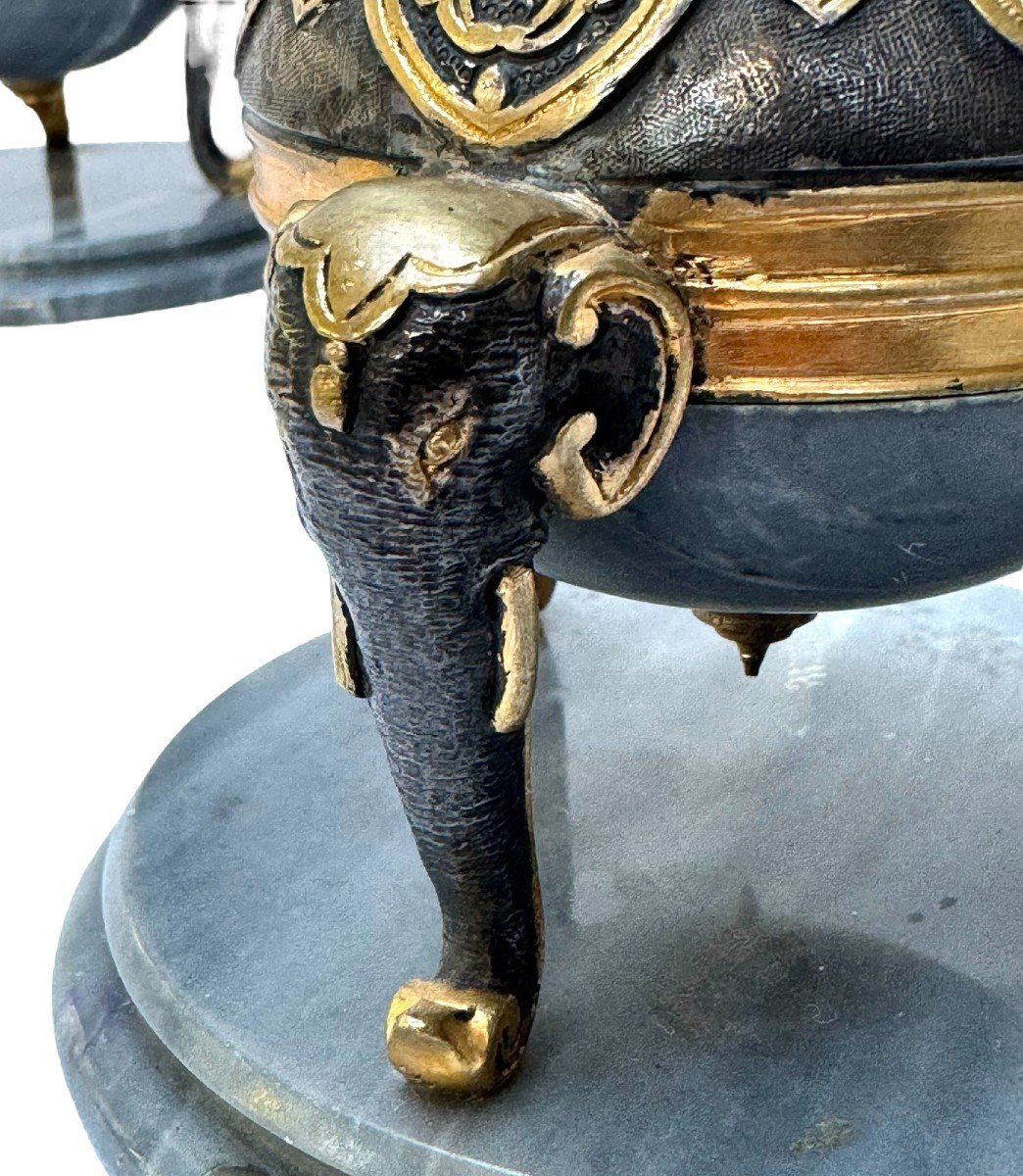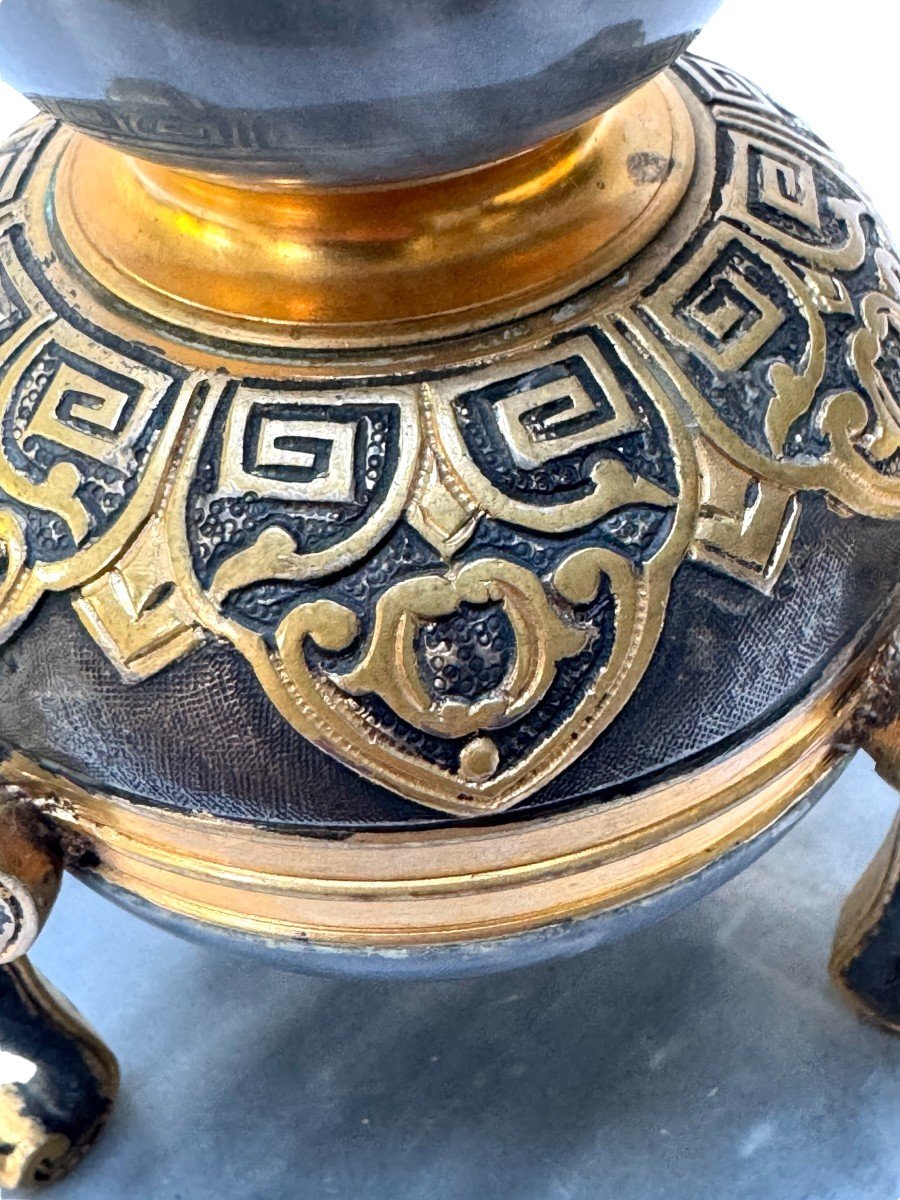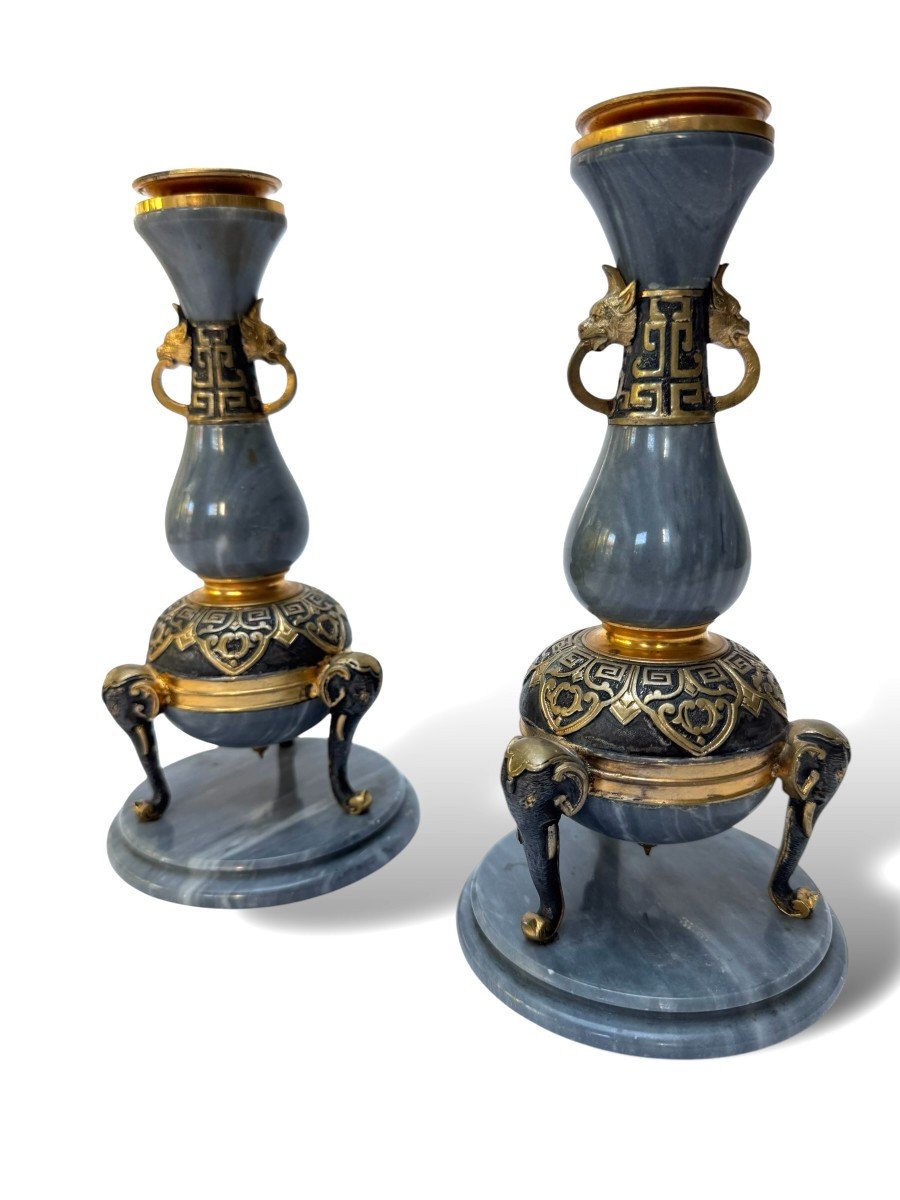Biography: See F. Rionnet "Les Bronzes Barbedienne, l'Œuvre d'une dynastie de fonteurs (1834-1954).
Ferdinand Barbedienne (1810-1892) created and directed at 30 boulevard Poissonnière in Paris, one of the most important art foundries during the second half of the 19th century. Already recognized by two large medals (Council medals) at the London Exhibition in 1851, F. Barbedienne won at the Universal Exhibition of 1855 in Paris, a large medal of honor and eleven medals of cooperators rewarding his creators of models, such as Louis-Constant Sévin (1821-1888), his chasers with Désiré Attarge (c.1820-1878) and his assemblers. At the Universal Exhibition in London in 1862, F. Barbedienne won medals in three different classes: art furniture, goldsmithing and art bronzes, notably for the happy combination of bronze and enamel. Avant-garde in decorative techniques with the Parisian goldsmith Christofle, art critics nevertheless attribute the paternity of cloisonné enamel to Barbedienne (see “L'émaillerie moderne”, Gazette des Beaux-Arts, Alfred Darcel, t. XXIV, Jan.-June 1868, pp. 75-84). Declared hors concours, in his capacity as member and rapporteur of the jury at the Universal Exhibition of 1867, Ferdinand Barbedienne nevertheless successfully exhibited his enameled works using the cloisonné and champlevé techniques. Named Officer of the Legion of Honor, Barbedienne was made Commander in 1878, following the Universal Exhibition where the jury compared him to “a prince of Industry and the king of bronze”. His glory did not fade over the years, since at the Universal Exhibition of 1889, the critics thanked Barbedienne for serving as a master to other bronze makers, through the consistently exemplary quality of his bronzes.












































 Le Magazine de PROANTIC
Le Magazine de PROANTIC TRÉSORS Magazine
TRÉSORS Magazine Rivista Artiquariato
Rivista Artiquariato